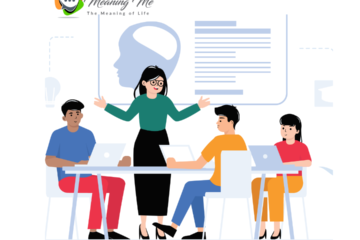E-Learning Drawbacks of Traditional Education: Inflexibility and Higher Costs
Introduction
The debate between e-learning and traditional education has been gaining momentum, particularly in the wake of rapid technological advancements and the global shift towards digitalization. As educational institutions and learners alike grapple with the pros and cons of each mode of learning, a nuanced understanding of their benefits, drawbacks, and the future landscape is essential. Traditional education, characterized by face-to-face interaction, structured classroom environments, and fixed schedules, has long been the cornerstone of the learning process. It fosters a sense of community, provides opportunities for immediate feedback, and cultivates interpersonal skills through direct interaction. However, it is not without its limitations. Traditional education can be inflexible, often requiring a physical presence, which may not be feasible for all learners. It also typically involves higher costs associated with infrastructure, transportation, and materials.

On the other hand, e-learning has emerged as a powerful alternative, leveraging technology to deliver education in more flexible, accessible, and cost-effective ways. E-learning platforms enable students to access courses from anywhere in the world, breaking down geographical barriers and democratizing education. The flexibility of e-learning allows learners to pace their studies according to their personal schedules, making it particularly advantageous for working professionals and those with other commitments. Moreover, the vast array of available resources, including video lectures, interactive simulations, and digital libraries, cater to diverse learning preferences and needs. E-learning also facilitates the use of data analytics to track progress and personalize learning experiences, enhancing engagement and outcomes.
However, e-learning is not without its challenges. The lack of physical interaction can lead to feelings of isolation and diminish opportunities for collaborative learning. Additionally, the reliance on technology necessitates a stable internet connection and access to devices, which can be a barrier for some. There is also the issue of self-discipline; e-learning requires a high degree of self-motivation and time management skills, which not all learners possess. Furthermore, the digital divide can exacerbate educational inequities, as not all students have equal access to the necessary technology and resources.
As we look to the future, the landscape of education is likely to be shaped by a hybrid approach, integrating the strengths of both e-learning and traditional education. This blended learning model can offer the best of both worlds: the flexibility and accessibility of e-learning combined with the interpersonal engagement and structured environment of traditional education. Technological advancements, such as artificial intelligence (AI) and virtual reality (VR), will further enhance these hybrid models, providing immersive and interactive learning experiences that can replicate or even surpass traditional classroom settings.
Additionally, the focus on lifelong learning and continuous skill development will drive the evolution of educational frameworks. As the job market continues to evolve, the demand for upskilling and reskilling will grow, and e-learning platforms will play a crucial role in meeting these needs. Institutions will need to adapt by offering more flexible, modular courses that can be easily integrated into a lifelong learning journey.
E-Learning vs. Traditional Education: Benefits, Drawbacks, and the Future Landscape”
Benefits of E-Learning:
1. Flexibility:
E-learning provides flexibility in terms of time and location, allowing learners to access course materials and participate in learning activities at their convenience.
2. Accessibility:
E-learning offers greater accessibility to education for individuals with physical disabilities, those living in remote areas, and those balancing work or family commitments.
3. Cost-effectiveness:
E-learning often incurs lower costs for both learners and institutions compared to traditional education, as it eliminates the need for physical infrastructure and resources.
4. Personalized learning:
E-learning platforms can be tailored to accommodate individual learning styles and preferences, offering personalized learning experiences for students.
5. Global reach:
E-learning transcends geographical boundaries, enabling learners from diverse backgrounds to connect and collaborate on a global scale.
Drawbacks of E-Learning:
1. Lack of face-to-face interaction:
E-learning may lack the interpersonal interaction and social dynamics present in traditional classroom settings, which can impact student engagement and collaboration.
2. Technology barriers:
E-learning relies heavily on technology, and learners without access to reliable internet connectivity or digital devices may face barriers to participation.
3. Self-discipline and motivation:
E-learning requires self-discipline and motivation from learners to stay on track with coursework and meet deadlines without the structure of traditional classroom environments.
4. Limited practical experience:
Some fields of study, such as hands-on lab work or performing arts, may require practical experience that is difficult to replicate in an e-learning setting.
5. Quality assurance:
Ensuring the quality and credibility of online courses and credentials can be challenging, as the proliferation of e-learning platforms may vary in terms of content, accreditation, and instructor expertise.

Future Landscape:
1. Blended learning:
The future of education may involve a blend of e-learning and traditional methods, combining the flexibility and accessibility of online learning with the benefits of face-to-face interaction.
2. Advancements in technology:
Continued advancements in technology, such as virtual reality, artificial intelligence, and adaptive learning systems, may further enhance the effectiveness and immersive nature of e-learning experiences.
3. Lifelong learning:
E-learning is expected to play a significant role in promoting lifelong learning and professional development, enabling individuals to acquire new skills and stay competitive in rapidly evolving industries.
4. Shift in educational models:
The rise of e-learning may lead to a reevaluation of traditional educational models and structures, with institutions adapting to meet the changing needs and preferences of learners in the digital age.
5. Increased collaboration and globalization:
E-learning has the potential to foster greater collaboration and knowledge sharing among learners and educators worldwide, contributing to a more interconnected and globalized educational landscape.
Benefits of e-learning
1. Flexibility:
Flexibility is a key advantage of e-learning, offering learners the freedom to access course materials and participate in learning activities at their own pace and convenience. This adaptable approach to education accommodates diverse schedules, lifestyles, and learning preferences, empowering individuals to pursue their educational goals on their terms.
2. Accessibility:
Accessibility is a cornerstone of e-learning, breaking down barriers to education by providing greater access to learning resources and opportunities. By leveraging digital platforms, e-learning enables individuals from diverse backgrounds and locations to engage in education, regardless of geographical limitations or physical disabilities.
3. Cost-effectiveness:
learning offers cost-effectiveness, reducing expenses associated with traditional education such as transportation, accommodation, and physical materials. With lower tuition fees and the elimination of overhead costs, e-learning provides an affordable alternative, making education more accessible to individuals seeking quality learning experiences without financial burdens.
4. Personalized learning:
Personalized learning is a hallmark of e-learning, catering to individual learning styles, preferences, and needs. Through adaptive technologies and customizable course materials, learners can tailor their educational experiences, pacing, and content to align with their unique goals, interests, and abilities, maximizing their learning potential.
5. Global reach:
E-learning extends its reach globally, transcending geographical boundaries and connecting learners from diverse backgrounds worldwide. With access to online courses and resources, individuals can engage in collaborative learning experiences, share perspectives, and build relationships across continents, fostering a truly global community of learners united by a quest for knowledge.
Drawbacks of E-Learning:
1. Lack of face-to-face interaction:
The absence of face-to-face interaction in e-learning can hinder interpersonal connections and collaborative dynamics. Without the immediacy of in-person communication, learners may miss out on the social cues, group discussions, and personal interactions that enhance the learning experience and foster a sense of community in traditional classroom settings.
2. Technology barriers:
Technology barriers in e-learning can impede access to education for individuals without reliable internet connectivity or digital devices. Limited access to technology may hinder participation, engagement, and learning outcomes, exacerbating disparities in educational access and opportunities among diverse populations.
3. Self-discipline and motivation:
Self-discipline and motivation are essential for success in e-learning, as learners must navigate coursework independently and manage their time effectively. Without the structure of traditional classroom environments, maintaining focus, setting goals, and staying motivated to complete assignments can pose challenges, requiring self-motivation and perseverance to achieve academic success.
4. Limited practical experience:
E-learning may lack hands-on practical experiences essential for certain fields of study, such as laboratory work or performing arts. Without physical interaction and real-world application, learners may miss out on valuable opportunities to develop practical skills and gain firsthand experience, potentially impacting their readiness for professional endeavors.
5. Quality assurance:
Ensuring quality assurance in e-learning is vital to upholding the credibility and effectiveness of online education. Institutions must maintain rigorous standards for course content, instructional design, and instructor qualifications to guarantee the integrity of online programs and credentials, providing learners with valuable and credible educational experiences.
Future Landscape
1. Blended learning:
Blended learning combines traditional classroom instruction with online components, offering a hybrid approach to education. By integrating face-to-face interaction with digital resources and activities, blended learning maximizes flexibility, engagement, and personalized learning experiences, catering to diverse learning styles and preferences while optimizing educational outcomes.
2. Advancements in technology:
Advancements in technology continue to revolutionize the educational landscape, offering new tools and opportunities for learning. From interactive multimedia resources to adaptive learning platforms, technological innovations enhance accessibility, engagement, and personalized learning experiences, shaping the future of education and preparing learners for success in the digital age.
3. Lifelong learning:
Lifelong learning is a commitment to continuous personal and professional development throughout one’s life. Through e-learning platforms and resources, individuals can acquire new skills, expand their knowledge, and stay current in their field, empowering them to adapt to changing environments and pursue lifelong growth and fulfillment.
4. Shift in educational models:
The rise of e-learning has prompted a shift in traditional educational models, leading institutions to adapt and innovate in response to changing student needs and preferences. With a greater emphasis on digital learning platforms and flexible delivery methods, education is evolving to meet the demands of the modern learner in the digital age.
5. Increased collaboration and globalization:
E-learning fosters increased collaboration and globalization by connecting learners from diverse backgrounds worldwide. Through online platforms and virtual communities, individuals can collaborate on projects, share ideas, and engage in cross-cultural dialogue, breaking down geographical barriers and fostering a more interconnected and globally aware educational landscape.

Conclusion
In conclusion, the comparison between e-learning and traditional education highlights the diverse benefits and drawbacks of each approach, while also envisioning a future landscape that integrates the strengths of both. While e-learning offers flexibility, accessibility, and personalized learning experiences, traditional education provides face-to-face interaction, practical experience, and social dynamics. However, advancements in technology and educational models are leading to a blended approach that combines the best of both worlds, catering to the diverse needs and preferences of learners in the digital age. Ultimately, the future of education lies in embracing innovation, collaboration, and flexibility to create inclusive and effective learning experiences that empower individuals to thrive in an ever-changing world.
MeaningMe The Meaning of Life
FAQ
What is the difference between e-learning and traditional education?
E-learning refers to education delivered online through digital platforms, while traditional education takes place in physical classrooms with face-to-face instruction
What are the benefits of e-learning compared to traditional education?
E-learning offers flexibility, accessibility, cost-effectiveness, personalized learning experiences, and global reach compared to traditional education.
What are the drawbacks of e-learning compared to traditional education?
Drawbacks of e-learning include the lack of face-to-face interaction, technology barriers, self-discipline, and motivation challenges, limited practical experience, and concerns about quality assurance
What is the future landscape of education?
The future of education is expected to involve a blended approach that combines the strengths of e-learning and traditional education, leveraging advancements in technology and educational models to create inclusive, flexible, and effective learning experiences for learners worldwide.




